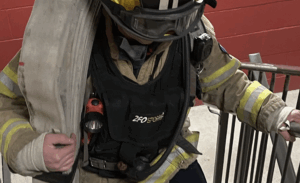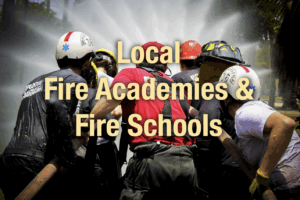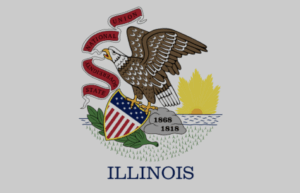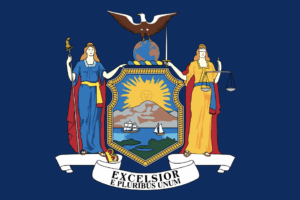Wildfires, formidable forces of nature, constantly threaten our environment, communities, and ecosystems. Amidst this ever-present danger, a dedicated legion of individuals stands resolute—the wildland firefighters. Behind the valiant efforts of these individuals lie a network of organizations, agencies, and a tapestry of jobs working tirelessly to combat these infernos and protect our landscapes.
The significance of wildland firefighting organizations and agencies cannot be overstated. These entities form the vanguard in the perpetual battle against wildfires, operating with precision and collaboration to mitigate risks, prevent devastation, and preserve our natural heritage. From governmental agencies like the U.S. Forest Service and Bureau of Land Management to various non-governmental organizations (NGOs), each plays a pivotal role in orchestrating a unified response to nature’s most ferocious elements.
At the heart of these organizations are the jobs—from the frontlines of firefighting to strategic planning, from ecological restoration to community engagement. These positions offer not just a career but a calling—a commitment to safeguarding our environment and communities from the ravages of wildfires.
In this exploration, we delve deep into the realm of wildland firefighting organizations, agencies, and the vast array of job opportunities they offer. Understanding their roles, functions, and the pathways they provide is critical to comprehending the relentless efforts put forth in preventing and fighting wildfires, ensuring the preservation of our world for generations to come.
Table of Contents
Understanding Wildland Firefighting Organizations
1. Overview of Major Organizations
Wildland firefighting involves collaboration among various organizations dedicated to wildfire prevention, management, and suppression. Some prominent entities include:
- U. S. Forest Service: Known for its extensive role in managing national forests and grasslands, the agency actively engages in wildfire prevention, suppression, and ecosystem restoration.
- Bureau of Land Management (BLM): Responsible for managing vast stretches of public lands, BLM plays a significant role in wildfire management, particularly in arid regions, ensuring the protection and conservation of natural resources.
- National Park Service: Charged with preserving national parks, NPS focuses on preventing wildfires within these treasured landscapes, employing strategies to maintain ecological balance while ensuring visitor safety.
2. Roles, Responsibilities, and Collaborations
Each agency carries distinct roles and responsibilities while collaborating to manage wildfires effectively:
- Prevention Efforts: Agencies work proactively to reduce fire risks through controlled burns, fuel management, and public education, aiming to mitigate the likelihood of large-scale wildfires.
- Suppression Strategies: During wildfire outbreaks, agencies collaborate to strategize containment, deploy firefighting resources, and manage operations, ensuring efficient utilization of personnel and equipment.
- Ecosystem Restoration: Post-fire, agencies collaborate on ecological restoration efforts, rehabilitating affected areas, restoring habitats, and ensuring long-term environmental resilience.
- Community Engagement: Collaborative efforts extend to engaging communities, disseminating safety information, developing evacuation plans, and fostering a cohesive approach to wildfire preparedness.
These agencies operate in tandem, leveraging their expertise, resources, and collaborative efforts to combat wildfires effectively. Their shared mission emphasizes the suppression of fires and the preservation of landscapes, ecosystems, and community safety.
Government Agencies in Wildland Fire Management
1. Detailed Exploration of Government Agencies
Governmental bodies play a pivotal role in the management and containment of wildfires, each with specific functions, jurisdictions, and expertise:
- U.S. Forest Service (USFS): Known for its stewardship of national forests, USFS spearheads wildfire prevention, suppression, and post-fire ecosystem restoration efforts. It manages nearly 193 million acres of forested land, implementing strategies to maintain ecological balance.
- Bureau of Land Management (BLM): Overseeing extensive public lands, BLM manages wildfire risks in diverse landscapes, focusing on fire prevention through controlled burns, fuel reduction, and vegetation management. Its efforts span 245 million acres, predominantly in the western United States.
- National Park Service (NPS): Responsible for safeguarding national parks and their ecological integrity, NPS employs fire management practices to preserve natural habitats. It balances wildfire management with visitor safety and conservation efforts within the park system.
- Other Agencies: In addition to the major agencies, state-level agencies, Fish and Wildlife Service, and tribal entities also contribute to wildfire management within their respective jurisdictions.
2. Case Studies and Successful Initiatives
Several noteworthy initiatives and case studies highlight the efficacy of these agencies in managing wildfires:
- Collaborative Fire Restoration Programs: Examples like the Collaborative Forest Landscape Restoration Program (CFLRP) showcase successful partnerships between agencies, communities, and stakeholders in restoring fire-adapted ecosystems.
- Fuel Reduction and Prescribed Burns: Agencies have effectively utilized prescribed burns and fuel reduction strategies, such as those under the Healthy Forests Initiative, to mitigate wildfire risks and promote forest health.
- Incident Command Systems (ICS): Implementing robust ICS frameworks has streamlined interagency coordination, enabling efficient response and resource allocation during wildfire incidents.
- Community Engagement and Preparedness: Agencies have conducted proactive community engagement programs, educating residents about wildfire risks and facilitating evacuation plans, leading to enhanced preparedness and safety.
These case studies exemplify the multifaceted approaches adopted by government agencies, demonstrating successful wildfire management, collaborative partnerships, and proactive measures in mitigating wildfire risks.
Non-Governmental Organizations (NGOs) in Wildfire Management
1. Overview of NGO Contributions
Non-governmental organizations (NGOs) play a pivotal role in wildfire management, offering support, expertise, and community engagement initiatives:
- Community Engagement: NGOs actively engage communities in wildfire preparedness, fostering awareness about fire risks, evacuation planning, and safety measures. Their outreach programs ensure communities are informed and equipped to respond effectively to potential wildfire threats.
- Education and Awareness: These organizations conduct educational campaigns, workshops, and training sessions, empowering individuals with knowledge about fire prevention, sustainable land management practices, and the importance of early detection and reporting of wildfires.
- Support for Firefighting Efforts: NGOs provide invaluable support to firefighting agencies by offering resources, volunteer programs, and specialized training. They assist in logistics equipment procurement and, at times, actively participate in firefighting efforts alongside government agencies.
2. Focus on Community Engagement
NGOs spearhead community-focused initiatives aimed at building resilience and preparedness:
- Collaborative Partnerships: Collaborating with local communities and NGOs facilitates the development of community-based fire prevention and preparedness plans. These partnerships enhance communication, coordination, and collective action during wildfire incidents.
- Outreach Programs: Engaging diverse demographics, NGOs organize outreach programs targeting schools, neighborhoods, and vulnerable populations. They disseminate information, host workshops, and foster dialogue to create a wildfire awareness and preparedness culture.
- Volunteer Networks: Establishing volunteer networks, NGOs train and mobilize community members to support firefighting efforts, conduct patrols, and assist in emergency response, bolstering the local firefighting capacity.
Through their dedicated community engagement, educational initiatives, and support for firefighting efforts, non-governmental organizations play an integral role in augmenting wildfire management strategies and fostering resilient communities.
Job Opportunities in Wildland Firefighting
1. Various Job Roles within Organizations
Wildland firefighting offers a spectrum of job roles spanning different expertise and responsibilities:
- Firefighter: Entry-level position involved in suppressing wildfires, conducting fire prevention, and maintaining equipment. Firefighters undergo rigorous training in fire behavior, suppression techniques, and safety protocols.
- Crew Supervisor: Supervisory roles overseeing firefighting crews, coordinating operations, ensuring safety protocols, and managing resources during fire incidents.
- Incident Commander: Experienced leaders responsible for overall incident management, strategic planning, resource allocation, and coordination between multiple firefighting teams.
- Fire Ecologist: Specialists focusing on the ecological aspects of wildfires, studying fire’s impact on ecosystems, conducting research, and developing strategies for landscape restoration post-fire.
2. Career Growth and Advancement Opportunities
Wildland firefighting careers offer avenues for growth, specialization, and advancement:
- Advanced Training and Certifications: Continuous learning and acquiring certifications in incident management, specialized firefighting techniques, prescribed burning, or ecological restoration pave the way for career advancement.
- Leadership Roles: Experienced professionals can progress into leadership roles such as fire management officers, district or regional fire directors, or chiefs, leading wildfire management programs and initiatives.
- Specializations: Opportunities exist for specialized roles like fire behavior analysts, smokejumpers, aerial firefighters, or those focusing on public education, community engagement, or research.
- Interagency Exchanges: Collaborative programs and interagency exchanges enable professionals to diversify their experiences by working across different agencies or regions, broadening their skill sets and perspectives.
Wildland firefighting careers provide employment and a pathway for growth, specialization, and leadership. Continuous learning, acquiring certifications, and exploring diverse roles lead to a fulfilling and impactful career within this dynamic field.
For more about opportunities, read How to Become a Wildland Firefighter: A Comprehensive Guide
Applying for Wildland Firefighting Positions
1. Strategies for Job Search
Practical strategies to secure wildland firefighter positions within agencies and organizations include:
- Agency Websites: Regularly visit official agency websites such as the U.S. Forest Service, Bureau of Land Management, and others, where job openings are posted in the careers section.
- Government Job Portals: Explore government job portals like USAJobs, which list positions available across various federal agencies, including those in wildland firefighting.
- Networking: Build connections with current firefighters and attend career fairs, workshops, or events organized by firefighting agencies to network and learn about potential job openings.
- Volunteer or Internship Programs: Participate in volunteer programs or internships firefighting agencies offer. These opportunities can serve as gateways to full-time positions.
2. Application Process Requirements and Essential Tips
Key elements to consider when applying for wildland firefighter positions:
- Minimum Requirements: Understand the minimum qualifications such as age, physical fitness standards, background checks, and certifications required for entry-level positions.
- Resume Preparation: Tailor your resume to highlight relevant skills, certifications, firefighting experience, physical fitness, and any specialized training related to wildland firefighting. Need help with your resume? Read Building a Strong Firefighter Resume and see example resumes and more.
- Essential Documentation: Ensure you have necessary documents such as a valid driver’s license, relevant certifications (e.g., CPR, First Aid), and any firefighting-related training certificates.
- Physical Fitness Preparation: Prioritize physical fitness and be prepared for fitness tests and assessments that are part of the application process.
- Interview Readiness: Practice for interviews, emphasizing your passion for firefighting, teamwork, problem-solving skills, and adaptability to challenging environments.
- Continual Learning: Display a willingness to learn and grow within the field by mentioning any ongoing training, certifications, or courses related to wildland firefighting.
Applying for wildland firefighting positions requires proactive job search strategies, meticulous preparation of application materials, and a readiness to showcase your commitment to this demanding yet rewarding profession.
For more on how and where to apply for wildland firefighter jobs, read How to Become a Wildland Firefighter: A Comprehensive Guide
Overview of Training Programs and Certifications
1. Wildland Firefighting Training and Certifications
Wildland firefighting positions entail specific training programs and certifications tailored to various roles:
- Basic Firefighter Training: Entry-level positions often require completing basic firefighter training programs covering fire behavior, suppression techniques, safety protocols, and equipment handling.
- Red Card Certification: Essential for all wildland firefighters, the Red Card (or Incident Qualification Card) validates an individual’s competency and readiness for firefighting duties.
- ICS Certifications: Incident Command System (ICS) courses and certifications are crucial for leadership roles, enabling effective incident management, coordination, and resource allocation during wildfire incidents.
- Specialized Training: Certain positions, like fire ecologists, may require specialized training in ecology, environmental science, or specific fire-related research areas.
- Physical Fitness and First Aid: Besides firefighting-specific training, maintaining physical fitness standards and having current First Aid and CPR certifications are often prerequisites.
2. Significance of Continuous Learning
Continuous learning and skill development are paramount in the field of wildland firefighting:
- Advanced Training: Pursuing advanced courses, such as Advanced Firefighter Training, Incident Management Courses, or specialized tracks like aerial firefighting or prescribed burns, enhances skill sets and career prospects.
- Regular Recertification: Certifications require periodic renewal or recertification. Staying updated with current practices, changes in firefighting protocols, and technology advancements is crucial.
- Skill Enhancement: Beyond mandatory certifications, ongoing skill enhancement in navigation, communication, fire behavior analysis, and leadership contributes to increased effectiveness on the job.
- Professional Development: Engaging in workshops, seminars, and conferences related to wildfire management, ecology, or emergency response fosters professional growth and keeps firefighters abreast of industry trends.
Continuous learning and skill development are not just requisites but pillars of success in wildland firefighting, ensuring readiness, adaptability, and effectiveness in combating wildfires.
Career Paths and Advancements in Wildland Firefighting Jobs
1. Opportunities for Career Progression
Wildland firefighting jobs offers diverse career paths within organizations/agencies:
- From Firefighter to Leadership Roles: Progression from entry-level firefighter positions to crew leaders, incident commanders, fire management officers, and chiefs involves increased responsibilities and leadership.
- Specialization Tracks: Professionals can diversify into specialized tracks like fire behavior analysts, smokejumpers, aerial firefighters, fire ecologists, or public educators based on interests and aptitudes.
- Agency Transfers and Interagency Exchanges: Opportunities to work across different agencies, regions, or programs provide exposure to varied environments, diverse firefighting strategies, and managerial experiences.
- Education and Experience: Advanced degrees in fields like fire science, forestry, ecology, or emergency management, complemented by hands-on experience, can open doors to higher-level positions.
2. Additional Certifications and Specialized Training
Certifications and specialized training contribute significantly to career advancement:
- Leadership Certifications: Advanced certifications in incident management, leadership, and supervisory roles (e.g., Advanced Incident Command System) prepare individuals for managerial positions.
- Specialized Training Programs: Courses in prescribed burns, hazardous materials handling, aviation operations, or fire investigations enhance skill sets and qualify for technical roles.
- Ecological and Environmental Certifications: For those inclined towards ecological restoration, certifications in ecology, environmental science, or restoration ecology are beneficial.
- Continuous Professional Development: Staying updated with cutting-edge firefighting technologies, research methodologies, and emerging trends through workshops, conferences, and advanced courses aids career growth.
Wildland firefighting offers a multifaceted career landscape, providing avenues for career progression, specialization, and leadership roles—continuous learning and additional certifications and specialized training fuel the journey toward higher positions and professional fulfillment.
For more about becoming a career full-time firefighter read: Firefighter Hiring Requirements and Preferences Explained
For more about wildland firefighter lifestyle, gear, and equipment read: Wildland Firefighters Lifestyle, Gear, and Equipment
Conclusion
Wildland firefighting is a dynamic and critical field supported by dedicated organizations and agencies offering diverse opportunities. From federal entities like the US Forest Service to nonprofit organizations and private companies, the spectrum of jobs and roles within this domain presents a chance to contribute to environmental preservation and community safety. Exploring these avenues opens doors to impactful careers while honoring the brave individuals who tirelessly protect our natural landscapes.
Learn How You Can Become A Firefighter

Mastering the Firefighter Exam is a complete guide on how to pass the firefighter exam with a top score. It simplifies the complicated hiring practices of big city fire departments and reveals insider information most candidates don’t know about.
If You Would Like To Know How To Get A Head Of Your Competition, This Book Is For You.







